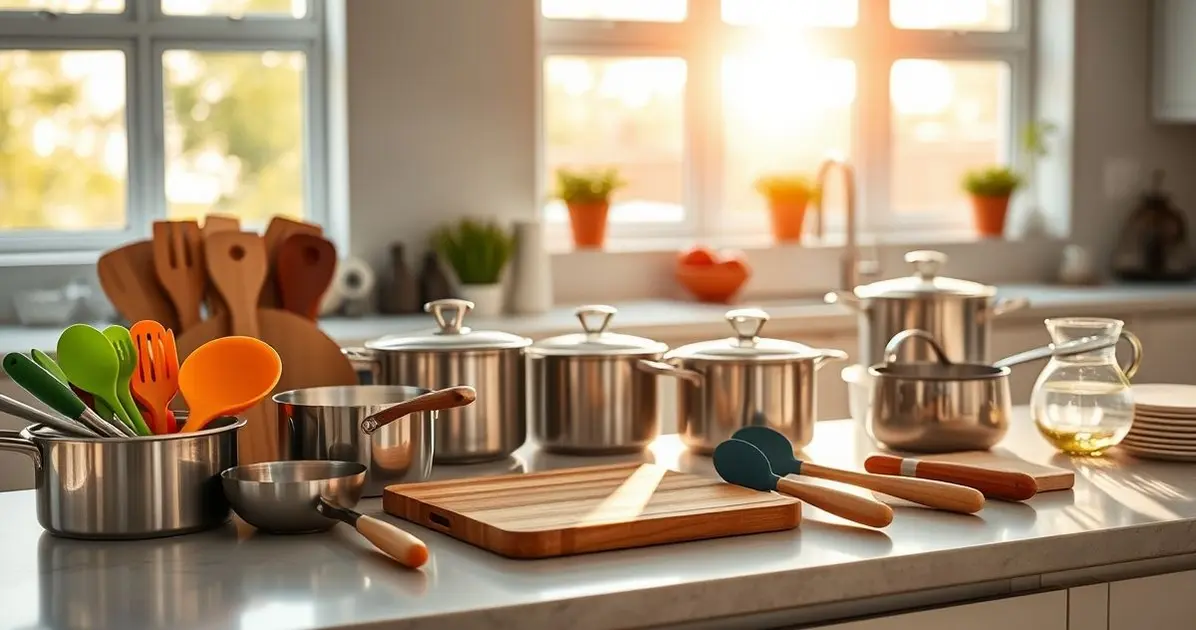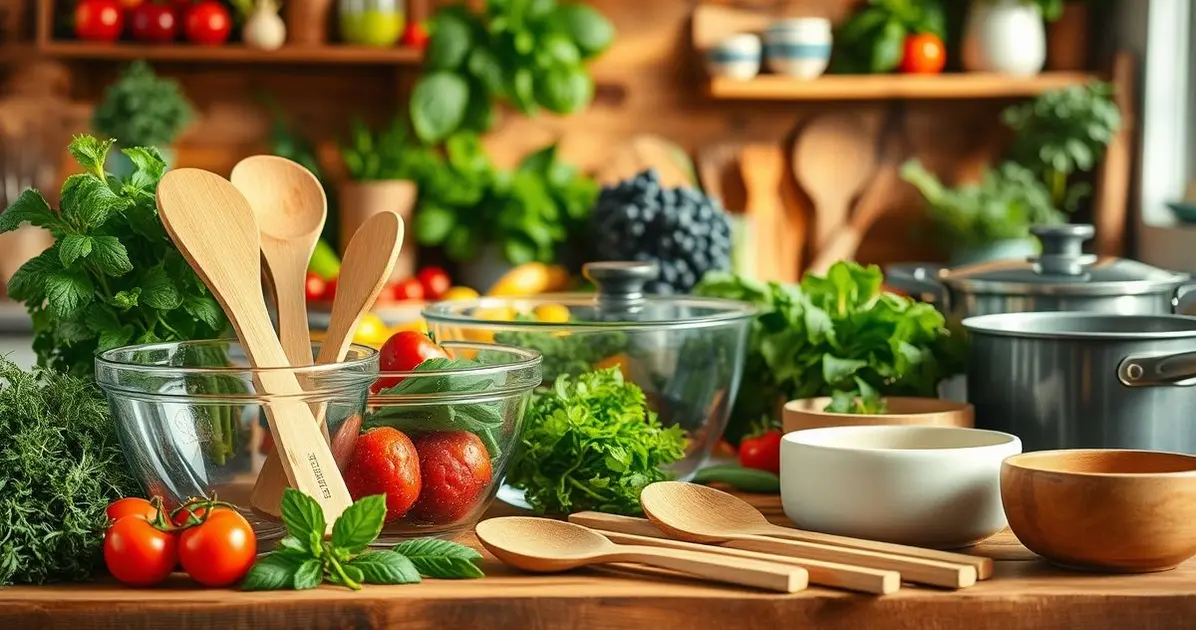When it comes to cooking, choosing the right utensils is crucial for safe food preparation. Safe cooking utensils should be made from materials that do not leach harmful chemicals into food, ensuring a healthier cooking experience.
What cooking utensils are safe

Opting for cooking utensils made from stainless steel, silicone, glass, or natural wood ensures safety and durability in food preparation. It’s essential to avoid plastic or non-stick materials that may release toxic substances when heated.
Pros and Cons of Stainless Steel Utensils
Stainless steel utensils are a popular choice in many kitchens due to their durability and versatility. However, like any material, they come with their own set of pros and cons. Here’s a detailed look at the advantages and disadvantages of using stainless steel utensils:
Pros of Stainless Steel Utensils:
- Durability: Stainless steel is highly durable and resistant to rust, corrosion, and staining. This makes it a long-lasting option for cooking utensils that can withstand the rigors of daily use.
- Non-Reactive: Stainless steel does not react with acidic or alkaline foods, ensuring that the flavors of your dishes remain pure. This property makes it safe for cooking a wide variety of meals.
- Easy to Clean: Stainless steel utensils are dishwasher safe and easy to sanitize. They can be cleaned quickly and effectively, making them a convenient choice for busy cooks.
- Heat Resistance: Stainless steel can withstand high temperatures without warping or melting, making it suitable for various cooking methods, including frying, boiling, and baking.
- Modern Aesthetic: Stainless steel utensils have a sleek, modern appearance that can complement any kitchen decor, adding a touch of elegance to your cooking tools.
Cons of Stainless Steel Utensils:
- Heat Conductivity: While stainless steel is durable, it is not the best conductor of heat. This can lead to uneven cooking if not paired with a good heat source. High-quality stainless steel cookware often has a copper or aluminum core to improve heat distribution.
- Price: Stainless steel utensils can be more expensive than plastic or other materials. However, their durability often justifies the higher price as they can last for many years.
- Weight: Stainless steel utensils can be heavier than their plastic counterparts, which may be a consideration for those who prefer lightweight tools in the kitchen.
- Scratching Non-Stick Surfaces: If used with non-stick cookware, stainless steel utensils can scratch the surface if not handled carefully. It’s important to use silicone or wooden utensils with non-stick pans to avoid damage.
In summary, stainless steel utensils offer numerous advantages, including durability, non-reactivity, and ease of cleaning. However, they also come with some drawbacks, such as heat conductivity and weight. By understanding these pros and cons, you can make informed decisions when selecting stainless steel utensils for your kitchen, ensuring you choose the right tools for your cooking needs.
Benefits of Cast Iron Cookware
Cast iron cookware has been a staple in kitchens for centuries, and its enduring popularity can be attributed to its numerous benefits. Here’s a closer look at the advantages of using cast iron cookware:
1. Excellent Heat Retention: Cast iron is known for its ability to retain heat exceptionally well. This property allows for even cooking and consistent temperature maintenance, making it ideal for frying, baking, and slow-cooking.
2. Natural Non-Stick Surface: When properly seasoned, cast iron develops a natural non-stick surface that improves with use. The seasoning process involves applying a thin layer of oil and heating the cookware, creating a smooth, non-stick layer that enhances flavor and makes cooking easier.
3. Versatility: Cast iron cookware is incredibly versatile and can be used on the stovetop, in the oven, or even over an open flame. This makes it suitable for a wide range of cooking methods, from frying and sautéing to baking and roasting.
4. Durability: With proper care, cast iron cookware can last a lifetime, often being passed down through generations. It is resistant to warping and can withstand high temperatures, making it a reliable choice for everyday cooking.
5. Nutritional Benefits: Cooking with cast iron can add trace amounts of iron to your food, which can be beneficial for those with iron deficiencies. The iron leaches into the food, especially when cooking acidic dishes like tomato sauce.
6. Cost-Effective: Cast iron cookware is generally affordable compared to other high-quality cooking materials. Given its durability and longevity, it represents a wise investment for any kitchen.
7. Eco-Friendly Choice: Cast iron cookware is made from natural materials and can be recycled at the end of its life. Choosing cast iron over disposable or plastic cookware contributes to a more sustainable kitchen environment.
In summary, the benefits of cast iron cookware include excellent heat retention, a natural non-stick surface, versatility, durability, nutritional advantages, cost-effectiveness, and eco-friendliness. By incorporating cast iron into your cooking routine, you can enjoy these advantages while enhancing your culinary skills and creating delicious meals.

Understanding Non-Stick Options and Their Safety
Understanding non-stick options and their safety is essential for making informed choices about cooking utensils. Non-stick cookware has become increasingly popular due to its convenience and ease of use, but it’s important to be aware of the materials used and their implications for health. Here’s a closer look at non-stick options and their safety considerations:
1. Types of Non-Stick Coatings: There are several types of non-stick coatings available, each with its own properties and safety profiles:
- Teflon (PTFE): Teflon is a widely recognized non-stick coating known for its excellent release properties. However, it can begin to break down at high temperatures (above 500°F or 260°C), releasing harmful fumes. Modern Teflon cookware is typically PFOA-free, addressing previous health concerns.
- Ceramic Coatings: Ceramic-coated cookware is an alternative to traditional non-stick surfaces. These coatings are made from silica and are free from PTFE and PFOA. They are generally considered safer, but their non-stick properties may diminish over time, especially if exposed to high heat.
- Hard-Anodized Aluminum: Hard-anodized aluminum cookware is treated to create a durable, non-porous surface that is resistant to scratching and corrosion. While it may not be labeled as non-stick, it often has natural non-stick properties and is considered safe for cooking.
2. Safety Considerations: When using non-stick cookware, it’s essential to follow safety guidelines to minimize risks:
- Avoid High Heat: To prevent the breakdown of non-stick coatings, avoid cooking at excessively high temperatures. Stick to medium or low heat settings to maintain the integrity of the cookware.
- Use Appropriate Utensils: To protect non-stick surfaces, use utensils made of silicone, wood, or plastic. Metal utensils can scratch and damage the coating, leading to potential health risks.
- Proper Cleaning: Clean non-stick cookware with gentle sponges and avoid abrasive cleaners that can damage the surface. Hand washing is often recommended to preserve the non-stick properties.
3. Recognizing Signs of Wear: Regularly inspect your non-stick cookware for signs of wear or damage. If the coating is scratched, peeling, or flaking, it’s best to replace the cookware to avoid potential health risks associated with ingesting particles from the coating.
In summary, understanding non-stick options and their safety is crucial for making informed choices in the kitchen. By being aware of the types of non-stick coatings, following safety considerations, and recognizing signs of wear, you can enjoy the convenience of non-stick cookware while ensuring your health and safety in the kitchen.
Importance of BPA-Free Plastics and Silicone
The importance of BPA-free plastics and silicone in cooking utensils cannot be overstated, especially in today’s health-conscious environment. As consumers become more aware of the potential dangers associated with certain materials, choosing safe and non-toxic options for cooking is essential. Here’s a closer look at why BPA-free plastics and silicone are important:
1. Understanding BPA: Bisphenol A (BPA) is a chemical commonly found in certain plastics, particularly polycarbonate plastics and epoxy resins. BPA is known for its ability to leach into food and beverages, raising concerns about its safety:
- Health Risks: Studies have linked BPA exposure to various health issues, including hormonal disruptions, reproductive problems, and an increased risk of certain cancers. As a result, many consumers seek BPA-free options to minimize their exposure.
2. Benefits of BPA-Free Plastics: BPA-free plastics are designed to provide the same functionality as traditional plastics without the associated health risks:
- Safety: BPA-free plastics are made from alternative materials that do not leach harmful chemicals into food, making them a safer choice for cooking and food storage.
- Durability: Many BPA-free plastics are designed to be durable and resistant to heat, making them suitable for various cooking applications.
3. Advantages of Silicone: Silicone is a popular alternative to traditional plastics and offers several benefits for cooking utensils:
- Heat Resistance: Silicone can withstand high temperatures (typically up to 450°F or 232°C) without melting or warping, making it ideal for baking and cooking.
- Non-Toxic and Safe: Food-grade silicone is free from BPA, phthalates, and other harmful chemicals, making it a safe option for cooking and food preparation.
- Flexibility and Non-Stick Properties: Silicone utensils are flexible, making them perfect for scraping and mixing, and they do not stick to food, simplifying the cooking and cleaning process.
4. Environmental Considerations: Choosing BPA-free plastics and silicone also aligns with environmentally conscious practices:
- Reduced Chemical Pollution: By opting for safer materials, consumers can contribute to reducing the demand for harmful chemicals in production, promoting a healthier environment.
- Reusability: Many silicone products are designed for long-term use, reducing the need for single-use plastics and minimizing waste.
In summary, the importance of BPA-free plastics and silicone in cooking utensils lies in their safety and functionality. By choosing these materials, consumers can enjoy peace of mind knowing they are making healthier choices for themselves and the environment. Embracing BPA-free and silicone options not only enhances the cooking experience but also supports a sustainable and health-conscious lifestyle.
Conclusion
In conclusion, the importance of BPA-free plastics and silicone in cooking utensils is paramount for ensuring safety and health in the kitchen.
As awareness of the potential dangers associated with traditional plastics grows, opting for BPA-free alternatives allows consumers to minimize their exposure to harmful chemicals.
Silicone, as a non-toxic and heat-resistant option, offers additional benefits, including flexibility and non-stick properties, making it an excellent choice for various cooking applications.
By choosing BPA-free plastics and silicone utensils, you not only prioritize your health but also contribute to environmentally conscious practices by reducing chemical pollution and waste.
Ultimately, understanding the significance of these materials empowers consumers to make informed decisions that enhance their culinary experience while promoting a safer and more sustainable kitchen environment.
Embracing these safer options is a step toward healthier cooking and a commitment to well-being for yourself and your family.
FAQ – Frequently Asked Questions about Non-Toxic Cooking Utensils
What are BPA-free plastics?
BPA-free plastics are materials that do not contain bisphenol A, a harmful chemical often found in some plastics that can leach into food and beverages.
Why is it important to use BPA-free cooking utensils?
Using BPA-free cooking utensils minimizes exposure to harmful chemicals linked to health risks, such as hormonal disruptions and certain cancers.
What are the benefits of using silicone utensils?
Silicone utensils are heat-resistant, non-toxic, flexible, and non-stick, making them safe and convenient for cooking and baking.
How can I identify safe brands for cooking utensils?
Look for certifications such as BPA-free labels, research brand reputations, and choose products made from food-safe materials.
Are all plastics unsafe for cooking?
Not all plastics are unsafe; look for high-quality, food-grade plastics that are specifically labeled as free from harmful substances like BPA.
What are some sustainable alternatives to traditional cooking utensils?
Sustainable alternatives include utensils made from bamboo, stainless steel, cast iron, and silicone, which are more environmentally friendly and often safer.
See more
Discover plenty of easy and delicious recipes you can make at home, from hearty dinners to indulgent desserts and wholesome breakfasts.




